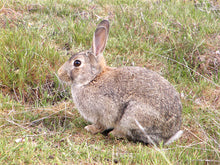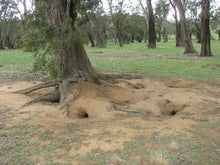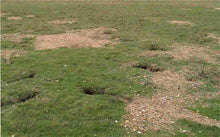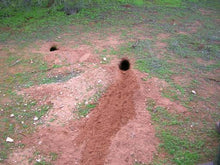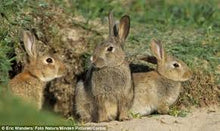The Rabbit Man - Managing Wild Rabbits
Regular price
$0.00
Sale
The impact of rabbits on the Australian environment has been disastrous. Rabbits have significantly altered the botanical composition of extensive areas of natural habitat.
Rabbits selectively feed on certain species of plants at critical stages of development such as seeding and seedling establishment. Rabbits can severely impact the regeneration or recruitment of critical vegetation communities.In some instances the impact created by rabbits on vegetation is often replaced with noxious and/or unpalatable weed species.
Research in semi-arid sites has shown that rabbit densities of 0.5 per hectare (one rabbit per two hectares) can severely damage some plant species. Research workers have found there may be no safe rabbit density for some tree and shrub seedlings.
Rabbit damage to native vegetation can seriously disadvantage native animals. In certain areas, rabbits are in direct competition with native wildlife for food and habitat. Ecological changes associated with high rabbit numbers have been blamed for the disappearance of the greater bilby Macrotis lagotis, and the pig-footed bandicoot, Chaeropus ecaudatus, and for putting many other species under stress.
The impact of rabbits (in combination with kangaroos) in rangeland national parks have resulted in native plants and animals being in poor condition with little chance of regeneration.
Rabbit populations may sustain numbers of predators such as cats and foxes subsequently increasing pressure on native animals, particularly those in critical weight ranges below 5 kg.
Excessive grazing pressure by rabbits contributes to loss of land through soil erosion. These erosion effects lead to off-site problems, such as reduced water quality, increased soil movement which may incur expensive repair measures.
In 2009 the national impact of rabbits through lost agricultural production was estimated at $206 million per annum. In combined data for Tasmania and Victoria rabbits are estimated to have cost approximately $30 million in lost production for the beef, lamb and wool industries per year.
Farmers in South Australia were reported to have begun walking off their land because of rabbits as early as 1881. This was only 22 years after their introduction to Australia and only six years after they were declared pest animals in South Australia.
In 1935, it was estimated that if rabbits were eradicated the State of New South Wales alone could immediately carry another 12,000,000 sheep.
In 1952, the production increase followig the spread of myxomatosis was worth an additional $68M and in 1953 the increase in Australia's wool clip was estimated at 30 million kgs. By 1960, sheep numbers had risen from 88 million to over 152 million.
A rabbit grazes more closely than domestic stock weakening perennial grasses during summer, potentially eliminating them from established pastures. The pasture is then likely to be invaded by broadleaf weeds and annual grasses.
In only three years of high rabbit densities, the cover of subterranean clover has been shown to reduce from 75 per cent to 20 per cent.







